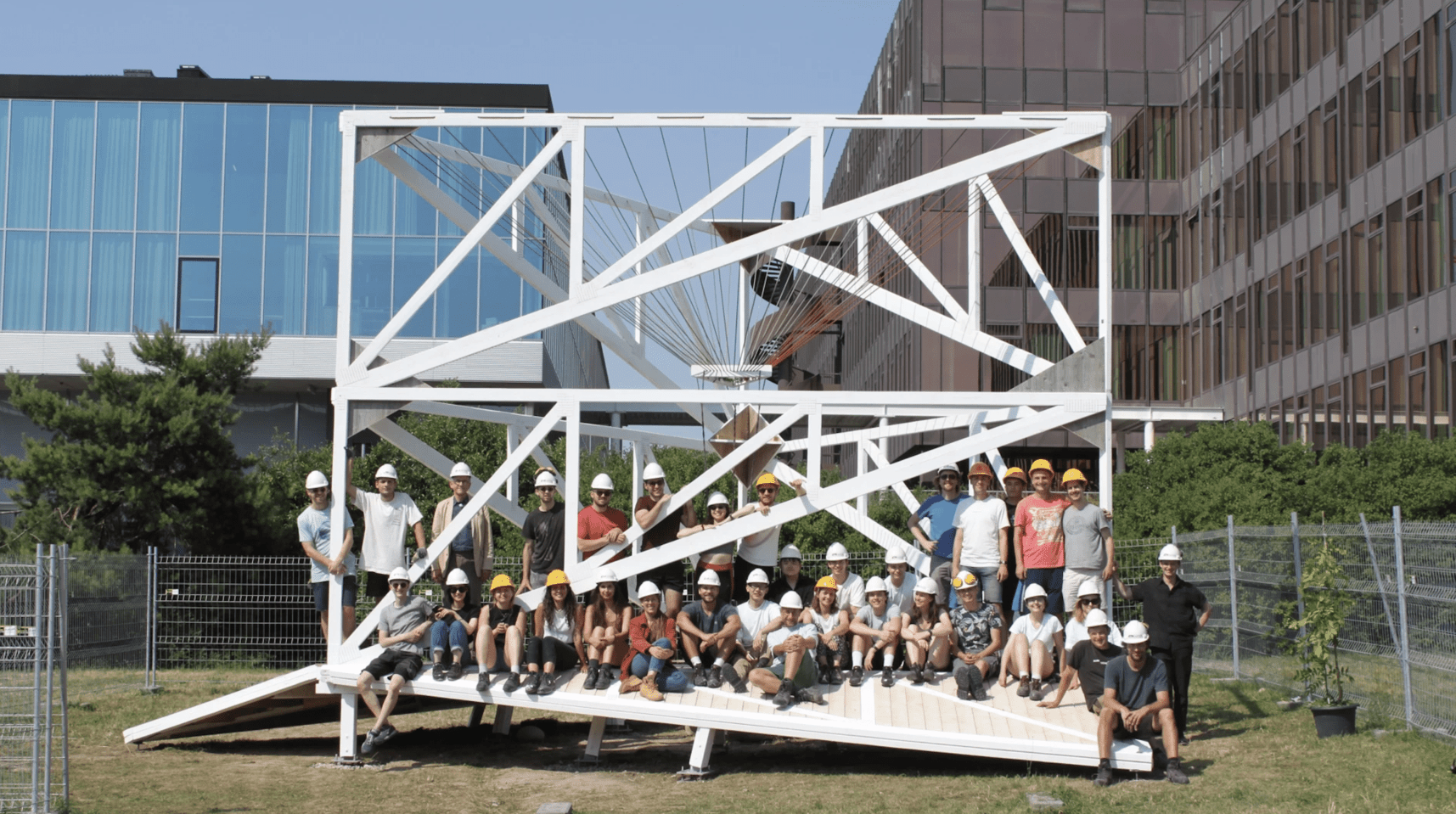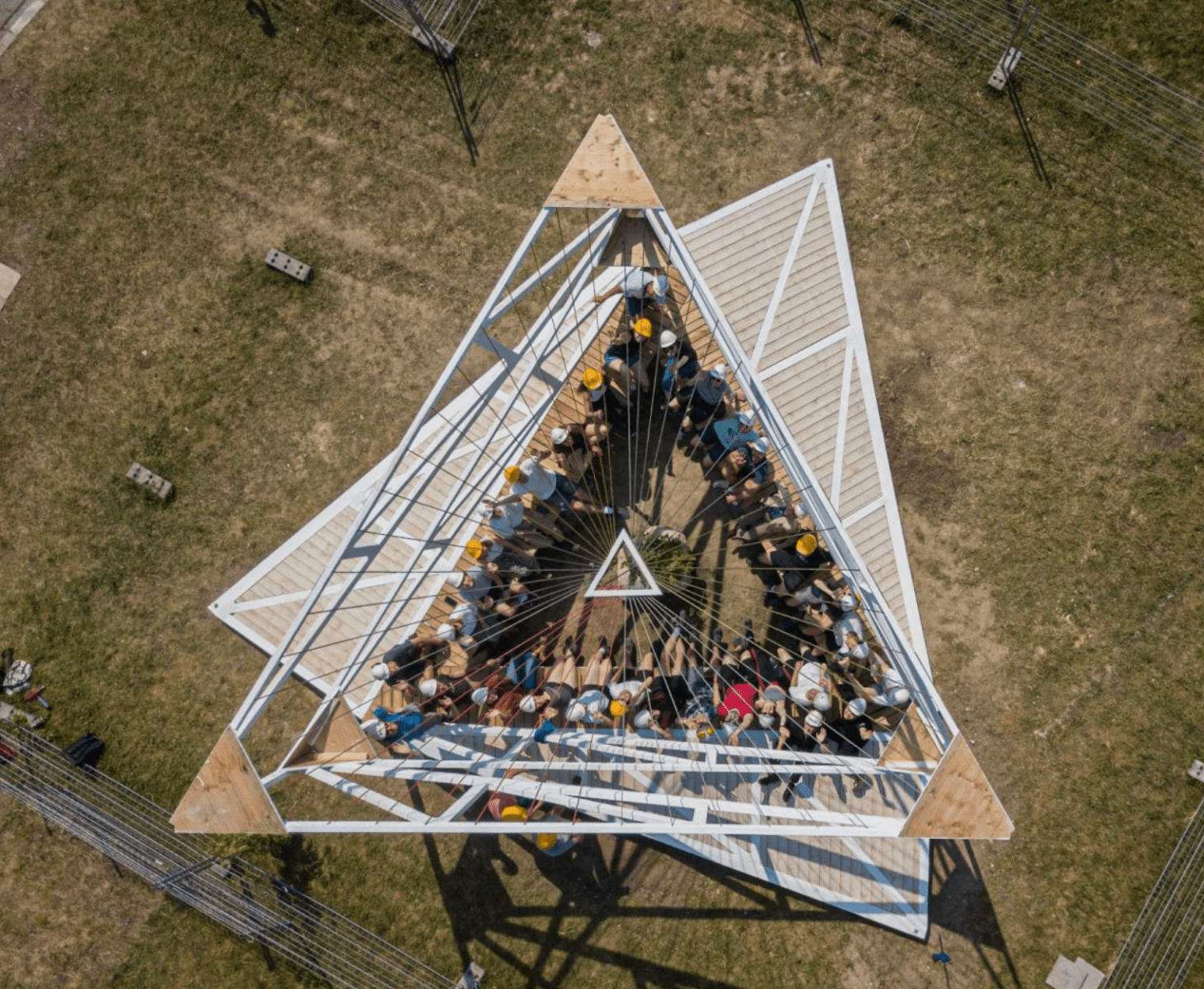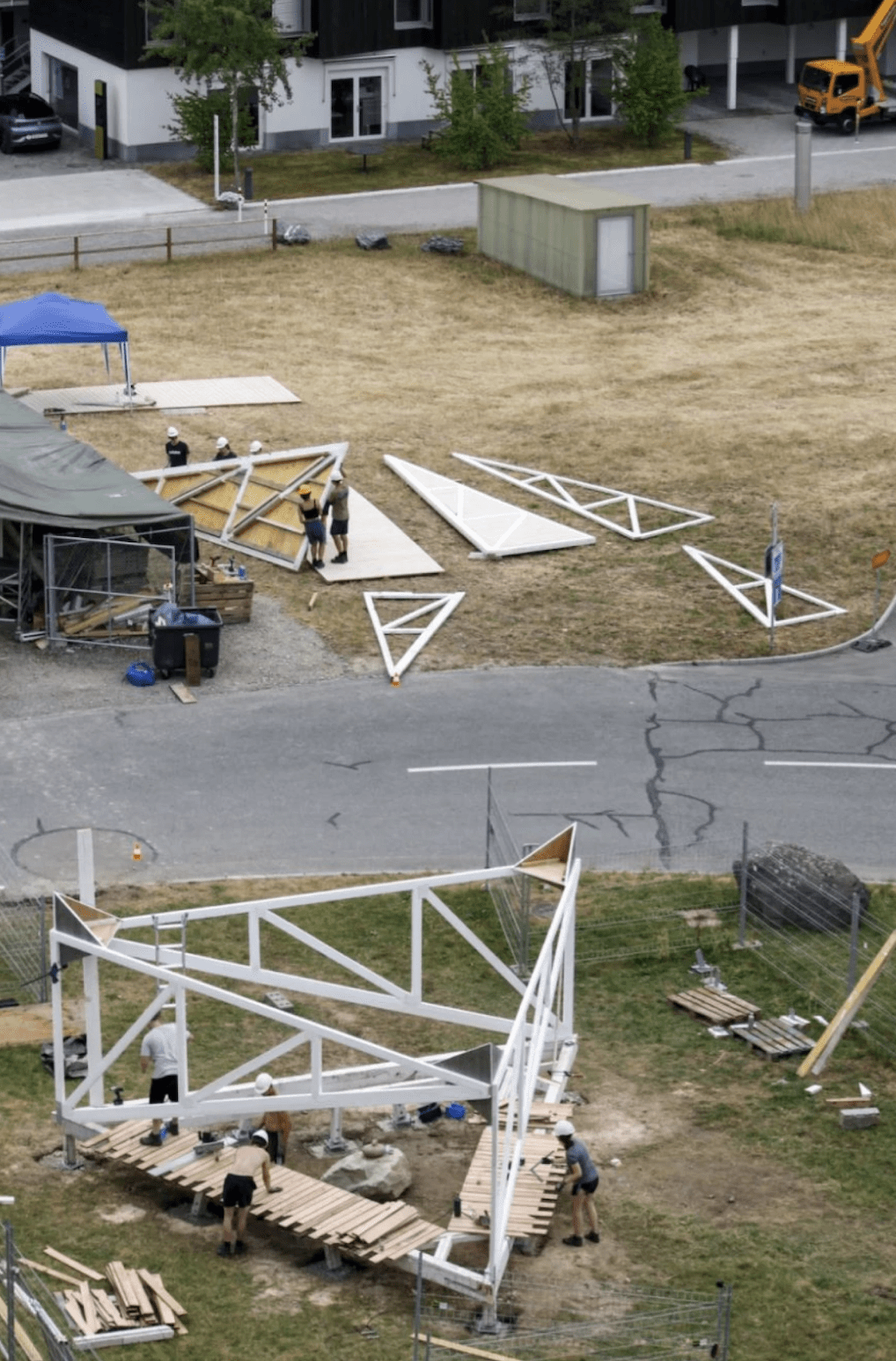Digital Transformation for Circular Construction
A brand-new course of the Civil, Environmental and Geomatic Engineering Department (D-BAUG) at ETH Zurich, aimed at Bachelor, Master and PhD students.

The course was structured into two components: an interactive in-class segment and a hands-on practice segment.
Each four-hour in-class session tackled one of the following technologies, all contextualized within circular construction: LiDAR scanning, photogrammetry, computer vision, robotics, computational design, 3D printing, blockchain technology, extended reality (XR), and immersive worlds (metaverse). Each lecture is divided into the following modules:
- Blended learning: we discussed key points of two pre-selected papers related to the technology of each class for which the students had to submit statements in advance.
- Flipped classroom: one group of 2-3 students per technology kicked off the lecture with a presentation based on their preliminary research.
- Foundational lecture: students followed a lecture that covers the foundational aspects of each technology and its significance in circular construction.
- Interactive activity: students engaged in hands-on activities with the technologies, like using LiDAR to map the ETH campus.
- Moodle quiz: the students’ understanding was further evaluated through a Moodle quiz.
- Guest lecture: at session’s end, experts from industry and government shared insights in an interactive guest lecture with Q&A.
Concurrently, students explored building materials from the Huber Pavilions at ETH Hönggerberg, using in-class knowledge to design a pavilion from these materials (aligned with Prof. Momoyo Kaijima’s design studio). Finally, the students undertook a six-day construction project on campus. Guided by expert professionals from Baubüro in situ ag, Wiederverwerkle GmbH, and B3 Kolb AG, this phase seamlessly merged academic insights with real-world execution, fostering adaptability, creativity, teamwork, and deep architectural understanding.

Proportions of (active) teaching and (passive) support
The teaching strategy balanced active learning with passive scaffolding, offering students a rich experience where they pro-actively exchanged knowledge with peers while benefiting from expert input. They were supported with technical advice, tools, and insights to refine their skills in circular construction. As students became more adept, they relied less on expert input and more on their own skills and the knowledge they exchanged with peers.
Feedback
A robust feedback system ensured consistent student progress in the curriculum. The course used a phased submission for the film project centered around digital technologies, offering guidance throughout their filmmaking journey, beginning with storyboarding, storytelling, filming, and editing. The design competition for the Reuse Pavilion emphasized iterative critique from both lecturers and invited professionals, beginning with sketches, design proposals, mock-ups until the final construction management, urging students to refine their designs for not only aesthetics, but also feasibility and construction practicality. As students delved into digital technologies, regular presentations allowed for feedback from educators and peers. This continuous feedback loop not only improved final outcomes but also ingrained the value of the iterative process of creation and learning.
Involvement and active participation of students
To foster student engagement, they were grouped by digital technologies and presented their research. Reading statements from articles sparked insightful class discussions. Activities, such as the design competition and film project, emphasized hands-on learning. Real-world construction experiences on campus bridged classroom knowledge with practical application.
Communication (channels student-lecturer, student-student, lecturer-lecturer)
Class communication blended digital tools with in-person interactions for seamless information exchange. For student-lecturer interactions, Moodle was pivotal, offering course materials, feedback, and assignment platforms. During construction week, an instant messaging (WhatsApp) group allowed students to directly engage with lecturers for real-time queries. For student-student exchanges, this same group promoted collaboration, idea sharing, and peer support. The dedicated course email streamlined all communications (also with industry experts and guest lecturers), ensuring timely responses. In-person sessions, crucial for student-lecturer and student-student discussions, fostered deeper connections and immediate clarification. Prioritizing lecturer-lecturer communication, the teaching team had a pre-course retreat and ongoing meetings, ensuring a unified approach throughout.
Ways that students receive support
In the course, students accessed diverse support. Digital channels (see communication) offered real-time feedback and resources, while face-to-face interactions with lecturers and experts ensured personalized guidance. During construction, seasoned professionals offered guidance, and teaching assistants consistently addressed queries and provided technical assistance. Additionally, peer collaboration played a pivotal role, as students frequently collaborated on projects, exchanged ideas, and offered mutual support.
Assessments
Course evaluations spanned theoretical and practical assignments, encompassing technical and communication skills. Students crafted a Life Cycle Assessment report for the Huber Pavilions› material reuse, made a short film on digital technologies in circular construction, and undertook tasks like digital inventory creation, 3D modeling, and material passport formulation. They also competed in a design contest for a Reuse Pavilion, culminating in a detailed report. The final assignment involved constructing a full-scale structure on the campus.

Question:
Which methods, tools or strategies did you use to encourage student engagement for learning success?
Prof. Catherine De Wolf:
The course fosters ETH competencies through various methods, tools, and strategies. Students read papers, present topics, interact with guests, do hands-on assignments, and work in interdisciplinary groups.
Question:
Describe the innovative elements of your course/project.
Prof. Catherine De Wolf:
The course explored sustainable construction with digital technologies and circular principles. Students learned from lectures, guests, field visits, and a pavilion project with reused materials.
Lessons Learned and Recommendations
I would recommend the following elements to others:
- First, integrating hands-on learning practices significantly enhances student engagement, providing them with tangible experiences that foster deeper comprehension. These hands-on methods can be further amplified with real-world site visits, like touring facilities that apply theoretical concepts.
- Secondly, the value of interdisciplinary learning cannot be understated. By blending diverse fields of study, students are exposed to a broader spectrum of ideas and approaches, cultivating a more holistic perspective. My students have expressed their profound gratitude for the opportunity to work together with students from other departments, for example. Encouraging peer collaboration and teamwork across disciplines promotes mutual learning and exchange of ideas.
- Guest lectures from diverse fields offer another layer of interdisciplinary richness, allowing students to gain real-world insights and varied perspectives.
- Iterative feedback mechanisms play a pivotal role in guiding students throughout their learning journey, ensuring they remain aligned with the course objectives and providing opportunities for mid-course corrections.
- The importance of technology in learning is evident in today’s rapidly advancing world. Incorporating modern digital tools, like AI and 3D modeling, can make learning more relevant and engaging.
- Integration of theory and practice is a key element I’d advocate for. Balancing theoretical knowledge with hands-on application ensures students understand the practical implications of their learnings.
- Finally, structuring a semester course around a concrete group objective, such as our practical project, not only instills a sense of purpose but also fosters cooperation, collaboration, dedication, and the tangible satisfaction that comes from seeing theory transform into practice. In line with this, end-to-end project management can greatly enhance students› sense of ownership and responsibility.
Project team
Deputy head of Inst. Construction&Infrastructure Manag.
Inst. Bau-&Infrastrukturmanagement
Stefano-Franscini-Platz 5
8093
Zürich
Switzerland
